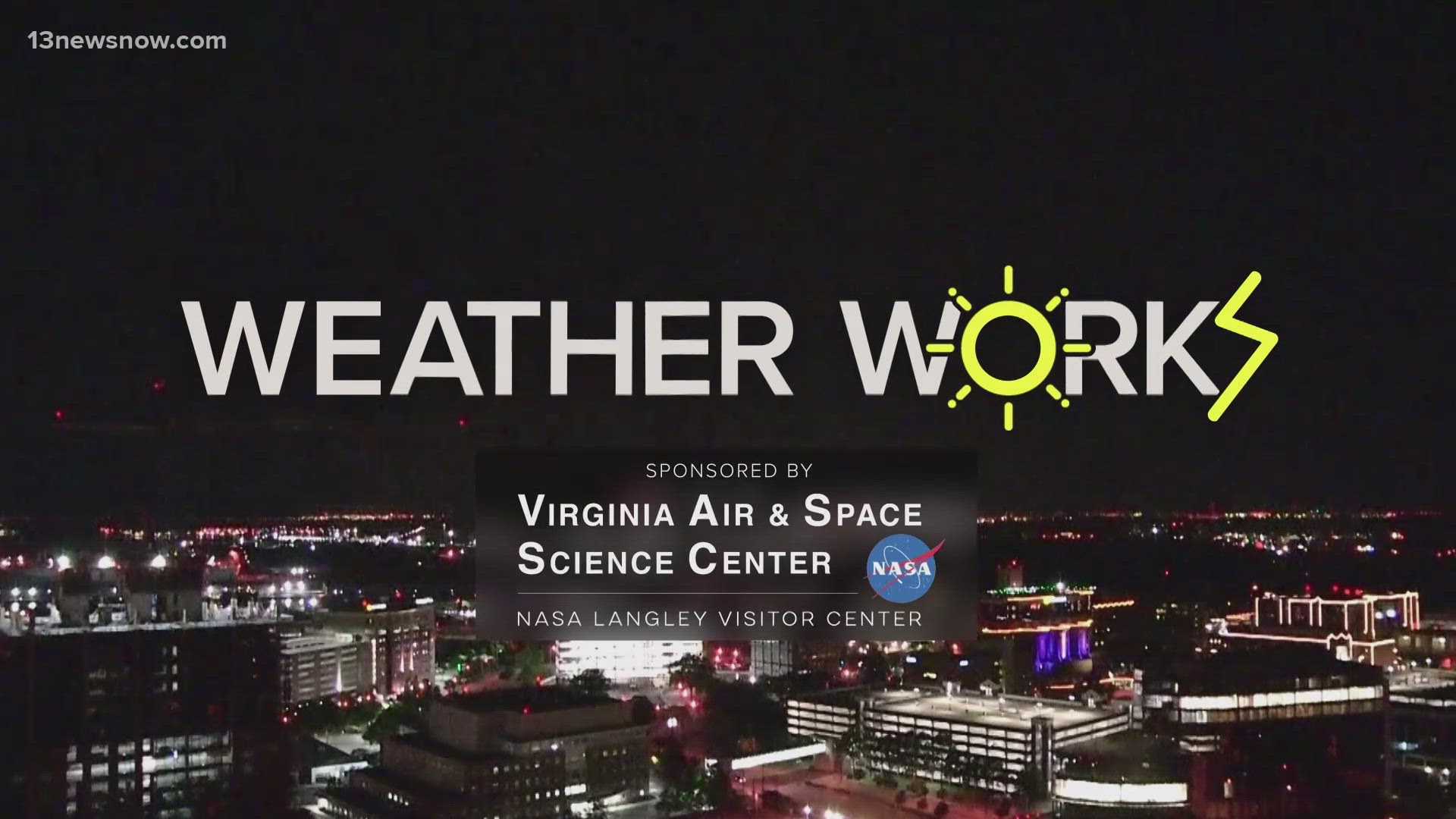NORFOLK, Va. — Let’s break down a well-known weather myth about lightning: does heat lightning really exist?
In the previous "Weather Works" episode, we talked about how lightning forms. But mainly during the summertime, people refer to lightning that strikes in the distance but cannot be heard as heat lightning. Is it real?
The simple answer is no. Heat lighting does not exist, and here’s why.
Heat lightning is not produced solely on hot and muggy summer days. This is just lightning within a distant storm that is too far away to hear.
The light from the strike is reflected off of the clouds and into our eyes. The thunderous boom though can only travel about 10 miles from the site of the strike. The Earth’s curvature can also prevent the thunder from reaching our ears. Thunder can hit the Earth’s surface and bounce away from where we are.
Additionally, the speed of light travels faster than the speed of sound so you are more likely to see the flash before you hear the thunder in any given lightning situation. According to the National Weather Service, around one hundred thousand thunderstorms occur in the U.S. every year. Only ten percent of those storms though are categorized as severe thunderstorms.
In southeastern Virginia and northeastern North Carolina, on average, we experience 20 to 60 thunderstorm days a year.
So now, you can one up your friends and tell them why heat lightning doesn’t exist. That's how your weather works!
For more information about other debunked lightning myths, check out Meteorologist Evan Stewart's breakdown here.

